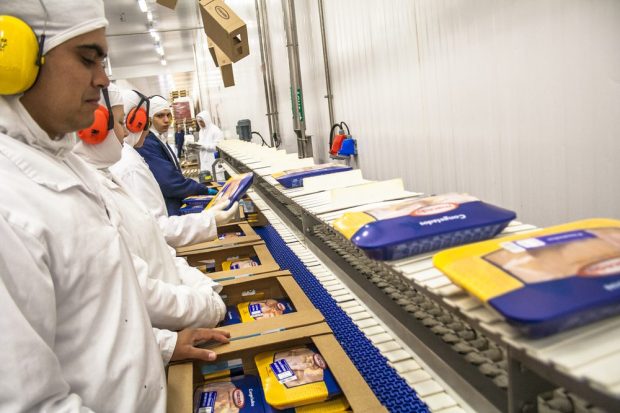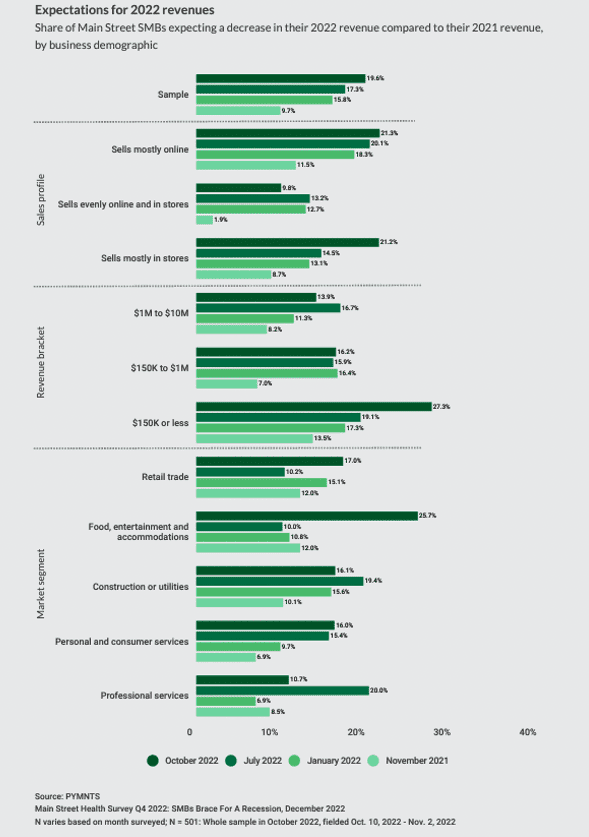Food Manufacturers’ Global Price Hikes Set to Slam Small Business Grocers

Smaller grocers are again caught between consumers and prices as major brands pass on their commodities costs.
Shoppers globally are expected to pay even more for branded food items in the coming year as packaged goods production expenses remain high, Reuters reported Wednesday (Feb. 8). Manufacturers, in turn, are projected to increase item prices until or unless commodities costs lower to the point that these companies’ margins ease.
Warnings about packaged goods prices remaining high came as late as last month from Mondelēz International, the parent company of brands that include Cadbury and Oreo. The snack and candy giant warned during its fourth-quarter earnings call that prices were set to continue rising.
This is especially tough news for small chain and independent grocers, which have already been bracing for decreasing revenues. The PYMNTS report “Main Street Health Q4 2022: SMBs Brace for a Recession” noted that small- to medium-sized business (SMB) revenue expectations severely worsened in October for sectors involving food and retail. The share of food, entertainment and accommodations Main Street SMBs projecting decreased revenues for the entire year rose two and a half times to 26% from July.

In October, 39% of Main Street SMBs cited inflation as their greatest 2022 challenge. This most popular answer was followed by the related “uncertainty about future economic conditions,” cited by 22% of respondents. Giants such as Nestlé and Unilever turning the screws further on pricing likely won’t comfort smaller grocers.
This outlook matches the general sentiment about the economic landscape. PYMNTS’ research has found that consumers believe inflation will last into 2024 and are scrambling to cover bills and expenses with dwindling savings. Customers are responding accordingly, cutting costs on even items once deemed essential. And while inflation has been steadily declining, grocery costs are still up nearly 12% from the same time last year.
When it comes to lowering prices, major groceries have the private-label advantage. Both Kroger and Walmart reported seeing marked higher sales in this category, as shoppers increasingly trade brand loyalty for cost-cutting. On the food and beverage side, Procter & Gamble has no plans to change its sales strategy as a result of this potentially cheaper competition, while McCormick said shoppers are returning to name brands.
Smaller grocers that don’t have private-label sales to fall back on have mostly responded to inflation’s pressures by marking up prices, as fresh food price increases have disproportionally affected them.
“[It] has been the primary strategy to fend off inflation’s effects, with 31% of [Main Street] firms saying this was the most important action, up from 29% in July,” the Main Street Health reported found.
Price markups may become less and less viable for small grocers as global brands’ own price hikes hit the market.
For these sector players to survive, smaller grocers may have to renew their focus on customer-facing loyalty approaches. These could include targeted coupons, adopting a format to meet customer habits of smaller but more frequent purchases as well as expanded curbside pickup options.
Smaller groceries can’t do much about branded prices staying high for now, nor can they compete with private-label offerings. They can, however, turn to other, longer-term customer-facing loyalty approaches to try to maintain their market share.
